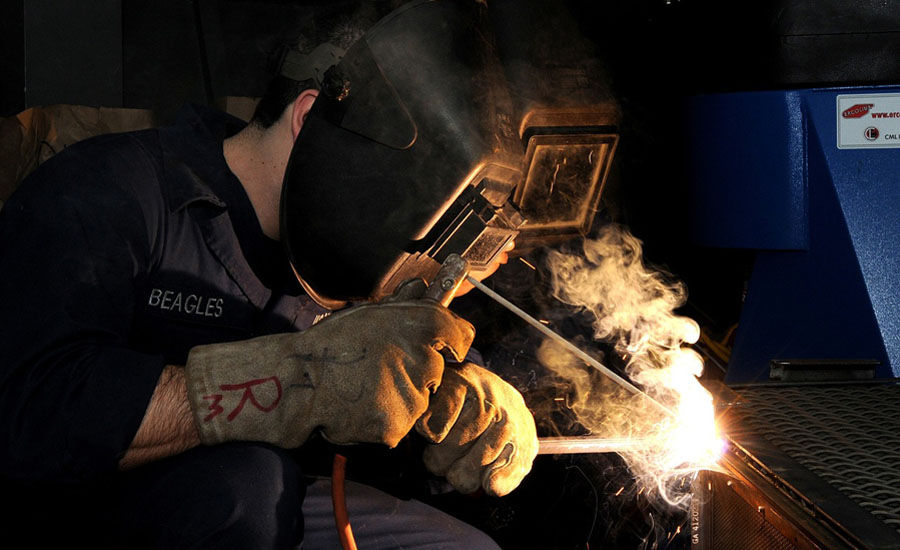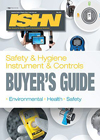Welders are at particularly high risk for eye injuries. A Canadian study reported that welders represented 21% of all eye injury claims. According to the U.S. Bureau of Labor Statistics (BLS), welders, cutters, and welding machine operators held about 521 000 jobs in 2000. The welding process exposes workers to a number of sources of mechanical, radiant, thermal, or chemical energy. A two-year study of eye injury among workers in automobile manufacturing reported that 15% of the most common types of injuries (foreign body, corneal abrasion, and chemical injury) were welding related. Welding is also the second leading cause of consumer product related ocular trauma.
Welding can also be performed by workers other than welders—for example, pipe fitters or construction workers. A recent study of work-related eye injuries reported that workers who are “sometimes” or “often” exposed to welding had a fourfold increased risk of an eye injury compared with non-exposed workers. However, little is known regarding the specific activities or circumstances involved in eye injuries among welders.
A typical incident might be, “the employee grinding a weld when piece of metal flew under safety glass into right eye” with the injury description “metal sliver in right eye.” “Grinding” was the activity, “normal mechanical work process initiated” (not involving a malfunction) was the initiating agent, “propelled or airborne” was the mechanism of injury, and “particulate or small solid” was the object or substance causing the injury.
In a research study, the primary mechanism of particulates, hot substances, and solid objects was propelled or airborne (ranging from 50–77.6%), whereas chemicals, liquids, and caustics were primarily from splashes or sprays (77.3%). Injuries were most often initiated by the work process (74.9%) during a normal mechanical operation (that is, not a malfunction) (86.8%). Processes initiated by another worker (or co-worker) accounted for 4.7% of all eye injuries and most often during a normal mechanical process (93.6%).
The use of PPE (for example, safety goggles, masks, helmets) was mentioned only in 14.7% of all welders’ claims, of which 20.6% reported donning or removing their PPE and 7.0% reported not wearing PPE at all.
Traumatic eye injury continues to be an important occupational health and safety issue for workers who are engaged in the welding processes, according to the study. One important finding was that non-welders doing welding related activities experienced a high proportion of burns from ultraviolet rays in spite of the well-known hazards of UV.
The injuries in the study were mostly minor; only 1.2% of those injured were disabled long enough to qualify for wage replacement (indemnity) benefits. The average cost of a welding-related eye injury was only slightly higher than the cost ($157) for medical only eye injury claims among construction workers.
The use or non-use of personal protective equipment (PPE) (for example, safety goggles, masks, helmets) was only mentioned in 14.7% of welders’ and 17.8% of non-welders’ claims, suggesting a very important area for intervention. Welding activity has considerable potential to affect other workers and the perimeter around this work should be considered hazardous. For example, that area could be 100 square feet (10 by 10) or greater; however this distance could be influenced by the confined nature of some welding work. It is apparent that workers near welding activity would benefit from training in the proper use of PPE, as most work related ocular injuries are potentially preventable.
Eye injuries are considered to be largely preventable especially if adequate eye protection is used and appropriate machine guards are positioned over obvious hazards. Common and effective approaches to the prevention of injury from the welding process suggest a well communicated eye safety policy for employees, protective eyewear available at no cost to workers (meeting ANSI Z87.1), periodic vision screening, and spot checks for the use of PPE when hazards are present. As many welding-related eye injuries are due to foreign bodies, researchers emphasize focusing on the prevention of hazards associated with propelled particulates during welding and grinding activities through engineering controls and improved tool design.
Source: “Welding Related Occupational Eye Injuries: a narrative analysis,” Injury Prevention journal, DA Lombardi, R Pannala, GS Sorock, H Wellman, TK Courtney, S Verma, GS Smith http://injuryprevention.bmj.com/content/11/3/174



